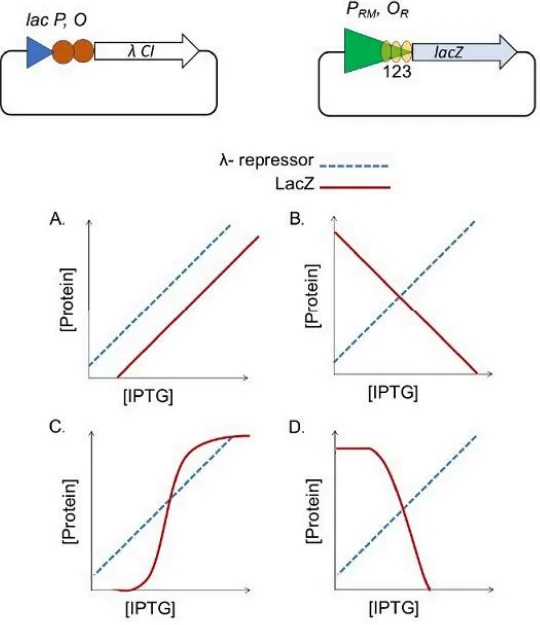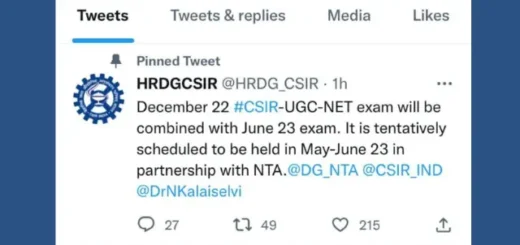CSIR NET Life Science Dec 2024 Answer Key (Parts C) – Complete Explanations! Part 5

CSIR NET Life Science Dec 2024 Answer Key (Parts C)
Q.1 Gradient formation of Fgf8 is governed by both diffusion from a localized source and removal of Fgf8 ligand through endocytosis. Both Rab5C and dynamin promote endocytosis. What would happen to the Fgf8 concentration gradient when Rab5C is overexpressed or dynamin is inhibited?

- A
- B
- C
- D
Answer: 3
Explanation:
- Overexpression of Rab5C → increases endocytosis → more Fgf8 removal → steeper gradient.
- Inhibition of dynamin → decreases endocytosis → less Fgf8 removal → flatter gradient.
- Thus, altering these proteins affects Fgf8 gradient due to changes in ligand uptake.
Q. 2 Given below are some statements regarding growth hormone (GH) secretion in humans.
A. Fasting increases GH secretion.
B. REM sleep decreases GH secretion.
C. Cortisol increases GH secretion.
D. Hypoglycemia decreases GH secretion .
Which one of the options given below represents both correct statements?
- A and B
- B and C
- C and D
- A and D
Answer: 1
Explanation:
GH increases when:
- Fasting – low glucose triggers GH release. When you fast, your blood sugar (glucose) level drops. Low glucose stimulates the body to release more GH. GH helps break down fat and spare glucose, which is useful during fasting.
- Hypoglycemia (low blood sugar) – GH helps raise blood sugar. Low blood sugar (hypoglycemia) is a strong trigger for GH release. GH helps raise blood sugar by making the liver release glucose and breaking down fat.
- Deep sleep (non-REM) – major time for GH secretion.
GH does NOT increase when:
- REM sleep – less GH is released. GH is mainly released during deep sleep (non-REM), especially in the first few hours of sleep.
- High cortisol (stress hormone) – long-term high cortisol can suppress GH.
Q. 3 A parasitoid infects a host to complete its life cycle. Which of the following life-history traits typically characterizes this parasitoid, assuming that only one parasitoid infects one host?
- Intrinsic rate of population growth faster than hosts; Eventually fatal for the host
- Intrinsic rate of population growth slower than hosts; Immediately fatal for the host
- Intrinsic rate of population growth comparable to hosts; Eventually fatal for the host
- Intrinsic rate of population growth faster than hosts; Immediately fatal for the host
Answer: 3
Explanation:
A parasitoid infects a host and eventually kills it, but since only one parasitoid uses one host, it cannot afford to kill the host too quickly. Therefore, the intrinsic growth rate is comparable to the host, and the effect is eventually fatal, allowing the parasitoid to complete its development.
Q. 4 When blood is forced into aorta from left ventricle during systole, a pressure wave is set up in aorta which is called pulse. Some features of the pulse are proposed in the following statements:
A. The rate of travel of the pulse wave is lower than the velocity of blood flow in arteries.
B. The pulse wave moves slower with advancing age as the arteries become more rigid.
C. The pulse wave is strong when the stroke volume is large as in exercise.
D. The strength of the pulse depends on the magnitude of pulse pressure and not on the mean arterial pressure.
Which one of the following options represents the combination of correct statements?
- A, B, C and D
- B, C and D only
- C and D only
- A only
Answer: 3
Explanation:
- A is incorrect: Pulse wave velocity is actually faster than blood flow.
- B is incorrect: Pulse wave velocity increases with age due to arterial stiffening.
- C is correct: Stronger pulse when stroke volume is large (like in exercise).
- D is correct: Pulse strength is related to pulse pressure, not mean arterial pressure.
Q. 5 The statements below are made about some animal pathogens that may evade innate and inflammatory responses by the following mechanisms:
A. The flagellin of Proteobacteria has a mutation that prevents it from being recognized by Toll-like receptors (TLRs).
B. The lipopolysaccharides of Helicobacter have mutations that prevent it from being recognized by TLRs.
C. M. tuberculosis escapes from the phagosome to the cytosol, thereby avoiding degradation by lysosomal enzymes.
D. Influenza virus produces Yop protein that inhibits inflammasome activity.
E. S. typhi encodes a protein that binds Type I IFNs and prevents them from binding to the IFN receptor.
Which one of the following options represents the combination of all correct statements?
- B and C
- A and C
- D and E
- A and B
Answer: 4
Explanation:
Statement A is correct because some Proteobacteria have mutations in their flagellin protein that prevent recognition by Toll-like receptor 5 (TLR5), which helps them avoid detection by the immune system.
Statement B is also correct. Helicobacter has changes in its lipopolysaccharide (LPS) structure, making it hard for Toll-like receptor 4 (TLR4) to recognize it, allowing the bacteria to escape immune detection.
Statement C is incorrect. Mycobacterium tuberculosis does not escape into the cytosol. Instead, it stays inside the phagosome and prevents it from fusing with the lysosome, avoiding degradation.
Statement D is incorrect because Yop proteins are produced by Yersinia bacteria, not the influenza virus. These proteins help Yersinia avoid the immune response, but this is not related to influenza.
Statement E is also incorrect. Salmonella typhi does not make a protein that binds to type I interferons to block their receptor binding. That mechanism is not known for this pathogen.
CSIR NET Life Science Dec 2024 Answer Key (Parts C)
Q. 6 A lac-lambda hybrid system is developed to study the λ-repressor protein, in which the λ CI gene is under the control of E. coli lac promoter and operator, and the lacZ gene is under the control of λ-PRM promoter and OR operator of λ-phage. Both the plasmids are introduced in E. coli and the concentrations of the proteins are determined upon the addition of IPTG.

Which graph correctly represents the expected results?
- A
- B
- C
- D
Answer: 3
Explanation:
In the system described, IPTG induces the lac promoter, which directly controls the expression of the λ CI repressor protein. Since this is a direct response, the CI protein level increases linearly with IPTG concentration — that’s why the repressor graph is a straight line.
On the other hand, lacZ is not directly controlled by IPTG. Instead, it’s controlled by the PRM promoter, which is activated by the CI repressor protein. This makes lacZ expression a second-level response — it depends on the amount of CI.
When CI starts to accumulate, lacZ activation is slow at first. Once CI reaches a certain threshold, it strongly activates the PRM promoter, and lacZ expression rises quickly. After a point, it saturates because PRM is fully activated. This creates a sigmoid (S-shaped) curve for lacZ — slow start, rapid rise, then plateau.
So in summary:
- CI increases directly and linearly with IPTG.
- lacZ increases indirectly, giving a sigmoid curve because it depends on CI activating another promoter.
Q. 7 Actin dynamics in cells is dependent on several actin-binding proteins. Given below are actin-binding proteins in Column X and their typical function in Column Y.
| Column X | Column Y |
|---|---|
| A. Formin | I. nucleates assembly to form a branched network |
| B. Arp2/3 complex | II. stabilizes filament, modulates binding of other accessory proteins |
| C. Cofilin | III. nucleates assembly and remains associated with the growing plus end |
| D. Tropomyosin | IV. binds ADP-actin filaments, accelerates disassembly |
Which one of the following options represents all correct matches between Column X and Column Y?
- A-(I) B-(II) C-(IV) D-(III)
- A-(III) B-(I) C-(IV) D-(II)
- A-(III) B-(II) C-(IV) D-(I)
- A-(II) B-(I) C-(IV) D-(III)
Answer: 2
Explanation:
Formin (A) helps to start the formation of straight, unbranched actin filaments. It stays attached to the fast-growing (plus) end of the filament and keeps adding new actin units. So, it matches with option III.
Arp2/3 complex (B) helps to form branched actin networks. It attaches to the side of an existing filament and starts a new branch, creating a tree-like structure. This matches with option I.
Cofilin (C) binds to actin filaments that contain ADP (older parts of the filament), and it helps break them down quickly. This speeds up actin disassembly. So, it matches with option IV.
Tropomyosin (D) binds along the sides of actin filaments and helps stabilize them. It also affects how other proteins interact with actin. So, it matches with option II.
Q. 8 A researcher needs to identify if Protein A is localized in the ER in a human cell line. The cell has an RFP-tagged protein that marks the ER in this cell. Following are the proposed experiments.
A. Express Protein A fused to GFP at the N-terminus in the cells, followed by microscopy to check for colocalization with RFP.
B. Express Protein A fused to GFP at the C-terminus in the cells , followed by microscopy to check for colocalization with RFP.
C. lmmunofluorescence staining of A, followed by microscopy to check for co-localization with RFP.
D. Isolating the ER by differential centrifugation and checking for co-purification of Protein A with RFP.
Which one of the following options represents experiments that would most likely identify localization of Protein A in the ER?
- A and D
- B, C and D
- A and C
- B and C only
Answer: 2
Explanation:
The goal is to find out if Protein A is located in the endoplasmic reticulum (ER).
Option B is correct because attaching GFP to the C-terminal of Protein A is less likely to interfere with the ER signal sequence, which is usually at the N-terminal. This helps the protein enter the ER properly, so the experiment will likely give reliable results.
Option C is also correct. Immunofluorescence is a powerful technique to see where a protein is inside the cell. By staining Protein A and comparing its location with the red fluorescent ER marker (RFP), you can see if they overlap — showing colocalization in the ER.
Option D is correct too. By isolating the ER through centrifugation and checking if Protein A is found along with the ER marker (RFP), you can confirm that Protein A is present in the ER.
Option A is not ideal. If you attach GFP at the N-terminal, it might block the ER signal sequence, which could prevent the protein from going into the ER. So the results could be misleading.
Q. 9 Urine volume is increased in osmotic diuresis which may be experimentally produced by the intravenous administration of mannitol that is filtered in the glomerulus but not reabsorbed in the renal tubule. The following statements suggest some of the physiological mechanisms of osmotic diuresis.
A. In the proximal tubule, water reabsorption falls due to presence of mannitol in tubular fluid and concentration of Na+ is decreased in this fluid.
B. In the descending loop of Henle, reabsorption of water is increased as medullary hypertonicity is decreased in osmotic diuresis.
C. In the thin ascending loop of Henle, reabsorption of Na+ is increased as the concentration gradient for Na+ is decreased.
D. In the collecting duct, reabsorption of water is less because of decrease in osmotic gradient along the medullary pyramid in osmotic diuresis.
Which one of the following options represents the combination of al l correct
statements?
- A and B
- B and C
- C and D
- A and D
Answer: 4
Explanation:
Statement A is correct because mannitol stays in the tubule, holds water there, and reduces water reabsorption in the proximal tubule. As a result, the sodium concentration in the fluid decreases.
Statement B is incorrect. In the descending loop of Henle, water reabsorption actually decreases during osmotic diuresis because the medullary interstitium becomes less concentrated due to the dilution caused by excess fluid in the tubule.
Statement C is incorrect. Sodium is reabsorbed passively in the thin ascending loop, and this process depends on the sodium concentration gradient. In osmotic diuresis, the gradient is reduced, so reabsorption doesn’t increase.
Statement D is correct because in the collecting duct, water reabsorption depends on the osmotic gradient in the medulla. Mannitol reduces this gradient, so less water is reabsorbed, and more water is lost in urine.
Q. 10 Given below are different types of bacterial growth curves.

Which one of the following options represents all correct matches between the growth curves and the type of culture?
- A: Continuous; B: Asynchronous; C: Synchronous; D: Diauxic
- A: Synchronous; B: Continuous; C: Asynchronous; D: Diauxic
- A: Continuous; B: Asynchronous; C: Diauxic; D: Synchronous
- A: Synchronous; B: Asynchronous; C: Continuous; D: Diauxic
Answer: 4
Explanation:
A: Synchronous – In this type of culture, all the cells divide at the same time, so the growth happens in clear, step-like phases. You can see jumps in the graph that match the division cycles.
B: Asynchronous – Here, the cells are at different stages of growth and division, so the population grows smoothly. The graph is a smooth curve because everything is happening at random times across the population.
C: Continuous – This type of culture is usually done in a chemostat, where fresh nutrients are constantly added and waste is removed. This keeps the cells growing at a constant rate, leading to a steady, flat growth curve.
D: Diauxic – This shows two distinct phases of growth. Bacteria first use one sugar (like glucose), then pause (lag phase), and then switch to a second sugar (like lactose). The graph shows two separate growth curves with a dip in between.
Also read :
Also read :
CSIR NET Life Science Dec 2024 Answer Key (Parts C) – Complete Explanations! Part 7
CSIR NET Life Science Dec 2024 Answer Key (Parts C) – Complete Explanations! Part 3
CSIR NET Life Science Dec 2024 Answer Key (Parts C) – Complete Explanations! Part 2
CSIR NET Life Science Dec 2024 Answer Key (Parts C) – Complete Explanations! Part 1
CSIR NET Life Science Previous Years Question Papers and answer keys
https://biologywala.com/csir-net-life-science-question-papers/#google_vignette
CSIR NET Life Science Previous Years Question Papers and answer keys
oin SACHIN’S BIOLOGY on Instagram or Facebook to receive timely updates and important notes about exams directly on your mobile device. Connect with Mr. Sachin Chavan, the founder of Sachin’s Biology and author of biologywala.com, who holds an M.Sc., NET JRF (AIR 21), and GATE qualifications. With SACHIN’S BIOLOGY, you can have a direct conversation with a knowledgeable and experienced.


